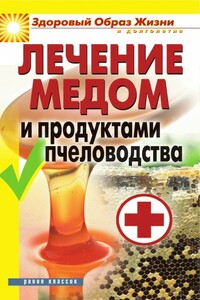Повышенный холестерин. Профилактика и лечение астеросклероза | страница 71
26. X. Sun, X. Jiao, Y. Ma et al., «Trimethylamine N-oxide induces inflammation and endothelial dysfunction in human umbilical vein endothelial cells via activating ROS-TXNIP-NLRP3 inflammasome,» Biochemical and Biophysical Research Communications, vol. 481, no. 1–2, pp. 63–70, 2016.
27. K. M. Boini, T. Hussain, P. L. Li, and S. S. Koka, «Trimethylamine-N-oxide instigates NLRP3 inflammasome activation and endothelial dysfunction,» Cellular Physiology and Biochemistry, vol. 44, no. 1, pp. 152–162, 2018.
28. Kilmer S. McCully, Robert B. Wilson. (1975). Homocysteine theory of arteriosclerosis. Atherosclerosis. 22, 215–227;
29. Чаллем Дж. и Долби В. (1999). Гомоцистеин: новый «холестерол». Изд-во «Крон-Пресс»;
30. Баранова Е. И., Большакова О. О. (2004). Клиническое значение гомоцистеинемии (обзор литературы). Артериальная гипертензия. 10;
31. D’Angelo A. and Selhub J. (1997). Homocysteine and thrombotic disease. Blood. 1, 1-11;
32. Добронравов В. А., Голубев Р. В. (2004). Гипергомоцистеинемия – фактор риска сердечно-сосудистых поражений у диализных больных и в общей популяции. Нефрология. 8, 44–49;
33. Mendoza-Oliva A., Ferrera P., Arias C. (2013). Interplay Between Cholesterol and Homocysteine in the Exacerbation of Amyloid-β Toxicity in Human Neuroblastoma Cells. CNS Neurol. Disord. Drug Targets;
34. Werder S. F. (2013). Cobalamin deficiency, hyperhomocysteinemia, and dementia. Neuropsychiatr. Dis. Treat. 6, 159–195;
35. T. M. Scott. (2004). Homocysteine and B Vitamins Relate to Brain Volume and White-Matter Changes in Geriatric Patients With Psychiatric Disorders. American Journal of Geriatric Psychiatry. 12, 631–638;
36. Jacobsen D. W. (1998). Homocysteine and vitamins in cardiovascular disease. Clin. Chem. 8, 1833–1843;
37. Annie L. Culver. (2012). Statin Use and Risk of Diabetes Mellitus in Postmenopausal Women in the Women’s Health Initiative. Arch Intern Med. 172, 144;
38. Statin use linked to increased risk of diabetes in older women. Risk of type 2 diabetes in postmenopausal women may be up to 48 percent higher than in women who do not use the cholesterol-lowering drugs, but the jury tilts in favor of continuing medication. (2012). Duke Med. Health News. 4, 4–5;
39. Uchechukwu K. Sampson, MacRae F. Linton, Sergio Fazio. (2011). Are statins diabetogenic?. Current Opinion in Cardiology. 26, 342–347;
40. Vienna E. Brunt, Douglas R. Seals, et al. Suppression of the gut microbiome ameliorates age-related arterial dysfunction and oxidative stress in mice. The Journal of Physiology, 2019.



